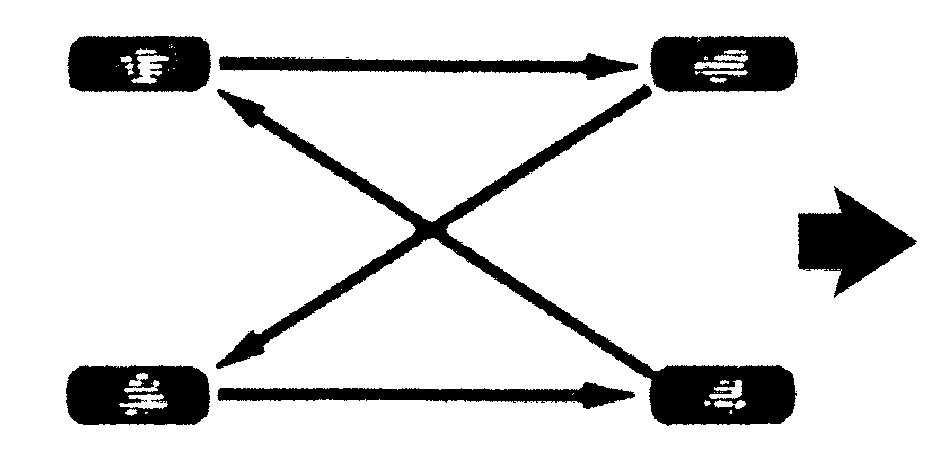To make your tires last longer, have them inspected and rotated at the mileages recommended in your Maintenance Schedule.
Any time you notice unusual wear, rotate your tires as soon as possible and check wheel alignment. Also check for damaged tires or wheels. See When It Is Time for New Tires and Wheel Replacement for more information.
The purpose of regular rotation is to achieve more uniform wear for all tires on the vehicle. The first rotation is the most important. See Maintenance Schedule for rotation intervals.
Rotation

Use this rotation pattern. Don't include the compact spare tire in your tire rotation.
After the tires have been rotated, adjust the front and rear inflation pressures as shown on the Tire and Loading Information label. Make certain that all wheel nuts are properly tightened. See Index under "Wheel Nut Torque."
Caution: Rust or dirt on a wheel, or on the parts to which it is fastened, can make wheel nuts become loose after time. The wheel could come off and cause an accident. When you change a wheel, remove any rust or dirt from places where the wheel attaches to the vehicle. In an emergency, you can use a cloth or a paper towel to do this; but be sure to use a scraper or wire brush later, if needed, to get all the rust or dirt off. See Changing a Flat Tire .
